Portugal, Azulejo, and Those Beautiful Blue Tiles
During our ten-day trip to Portugal, my friends and I became obsessed with one question: Why are so many of Portugal’s buildings covered in tiles?
So we asked everyone, at museums, on our tours, and even in the back of Ubers. We wanted to know why the colors of blue and yellow seemed to dominate the facades, and what the purpose of covering entire buildings in ceramic was. What we discovered fascinated us, and some of the history we stumbled upon had unique ties to Boston, Massachusetts, as well.
The Influence of the Moors
I first heard the word azulejo in Porto. It stems from the Arabic al zellige, and came to Portugal with the Moors. The Moors had come from North Africa and had ruled parts of Portugal and Spain for centuries. Along with them came much of the intricate architectural styles you see all throughout the country, like geometric tilework, symmetrical gardens, horseshoe arches, and a deep love of surface decoration. They often depicted math as art, and the use of tiles was a key part of that language
.Even after the Moors were pushed out of Portugal, those aesthetic influences remained in the country. It shaped what would become the Portuguese signature style of decorative, bold, repeating motifs.
In the early 1500s, King Manuel I visited Seville and saw the Spanish-Moorish tiles there, and according to history, he had to bring them home. At first, azulejos were reserved for royalty and used in palaces and churches to show Portuguese wealth and influence, but over time, the style evolved. In the 17th century, Portuguese artisans began creating tiles that weren’t just patterned, but told stories. Sometimes, very long stories, depicting entire biblical scenes or historical events across the walls.
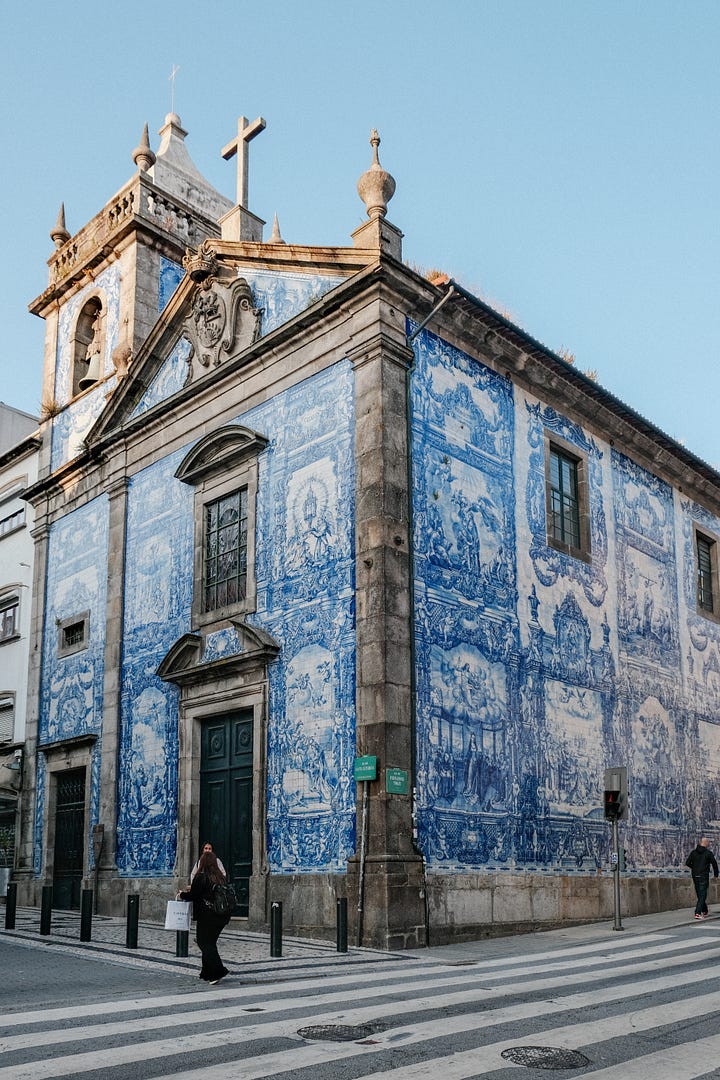
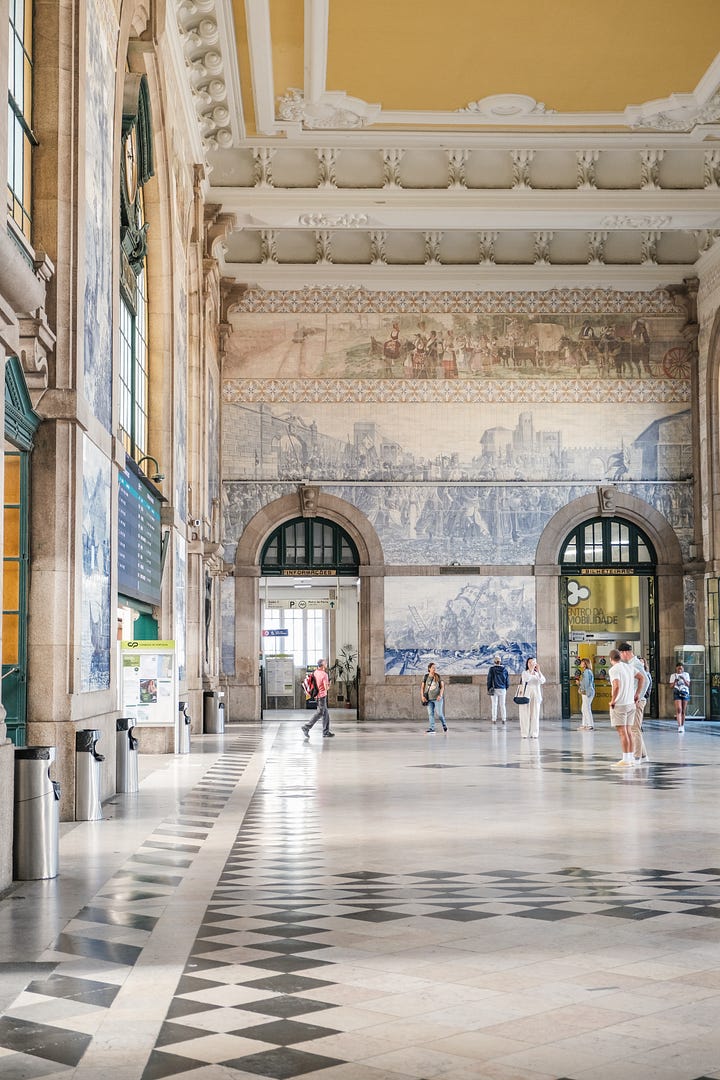
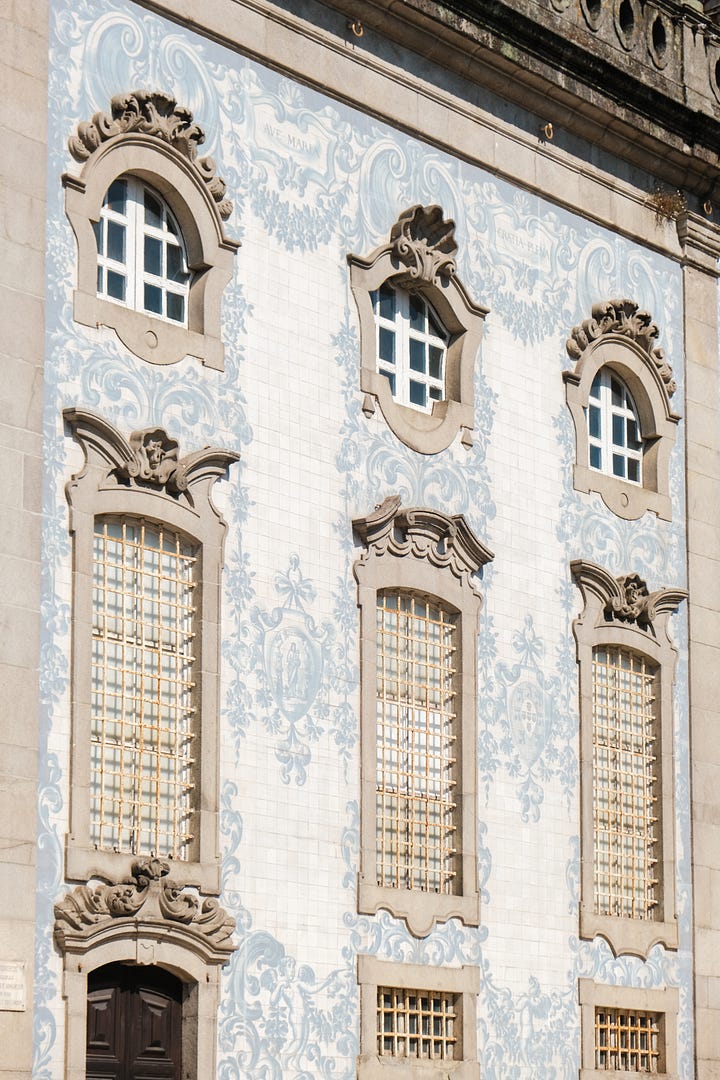
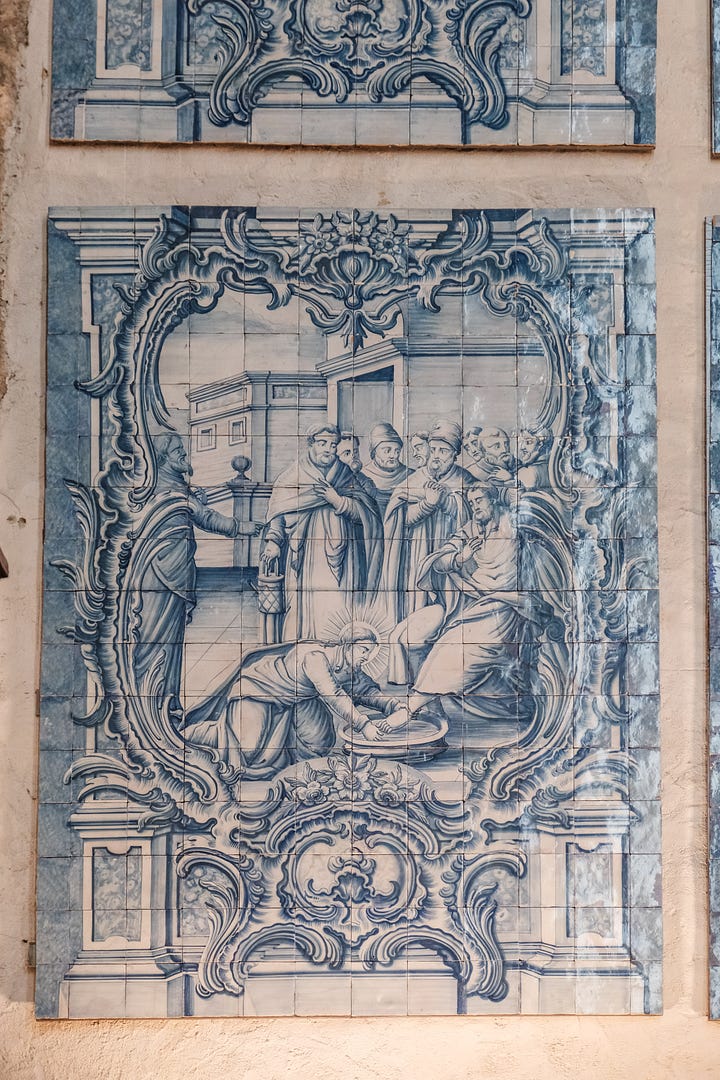
At this point in history, the color palette also started to shift. The blue and white tiles were rumored to have been heavily influenced by Chinese porcelain and Dutch Delftware, both of which were traded globally via Portugal’s trade routes. The warm yellows found all over the country offset the blue tones found in the tiles and the facades of buildings. The yellow is supposed to help with reflecting the heat of the sun, but is also rumored to help ward off insects.
Tiles on Exteriors
We learned that the use of tiles on building exteriors is for very practical reasons. They're durable, weather-resistant, and also help insulate homes against heat and humidity. And unlike painted stucco, they also age beautifully. The color doesn’t fade as easily, though many of the buildings we saw had been protected from the elements with a film over the top.
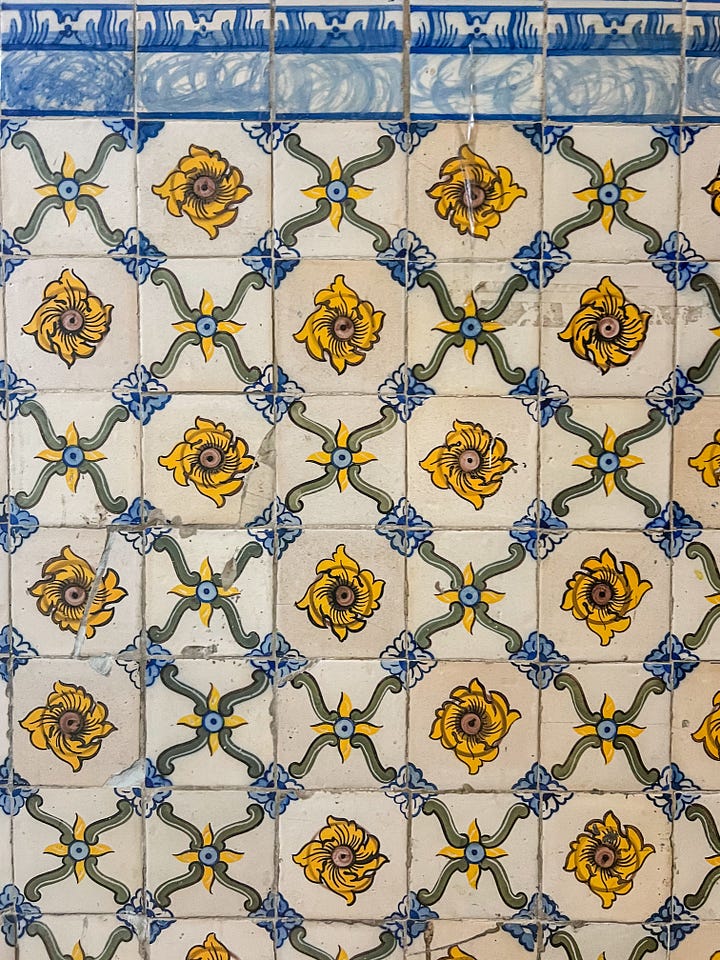
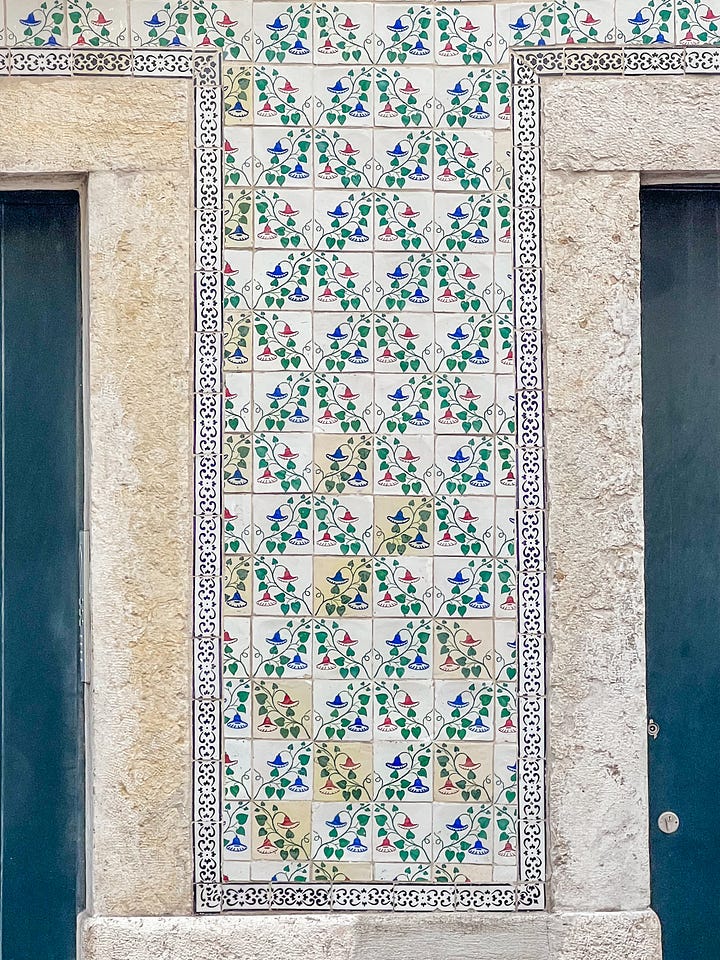
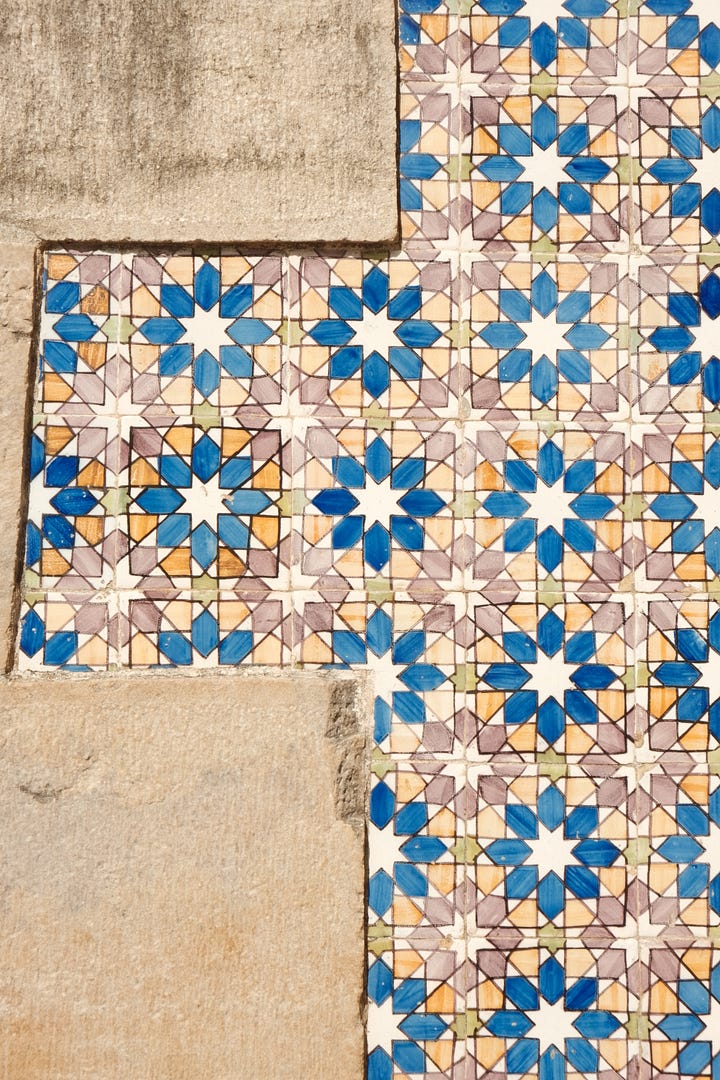

What started as a symbol of wealth eventually became part of everyday construction and a public art tradition. It’s still practiced today, with tiled buildings from the 1950s and ‘60s proudly standing alongside baroque palaces, lining the outsides of small shops and restaurants with colorful and unique colors and patterns.
My Favorite Details
In Sintra, many castles showcased tiles and arches with raised textures, allowing the patterns to cast shadows that shift with the sun
In Cascais, I photographed the use of tiles as signposts, with street names painted directly onto the façade.
In Porto, I saw the Chapel of Souls tiled in full blue-and-white murals, each square hand-painted, narrating stories for a largely illiterate population centuries ago
The Porto São Bento Train Station had one of the more elaborate and beautiful examples of azulejo work in the main vestibule, covering all four walls with stunning storytelling.
A Final Thought
There’s something incredibly poetic about the way Portugal dresses its buildings. Tiles that began as symbols of wealth and religious power are now part of the fabric and backdrop of daily life. So if you ever find yourself in Portugal, do yourself a favor and look up, and look closely at all of the beautiful artistry found around you.
Until next time,
The Slate Team









